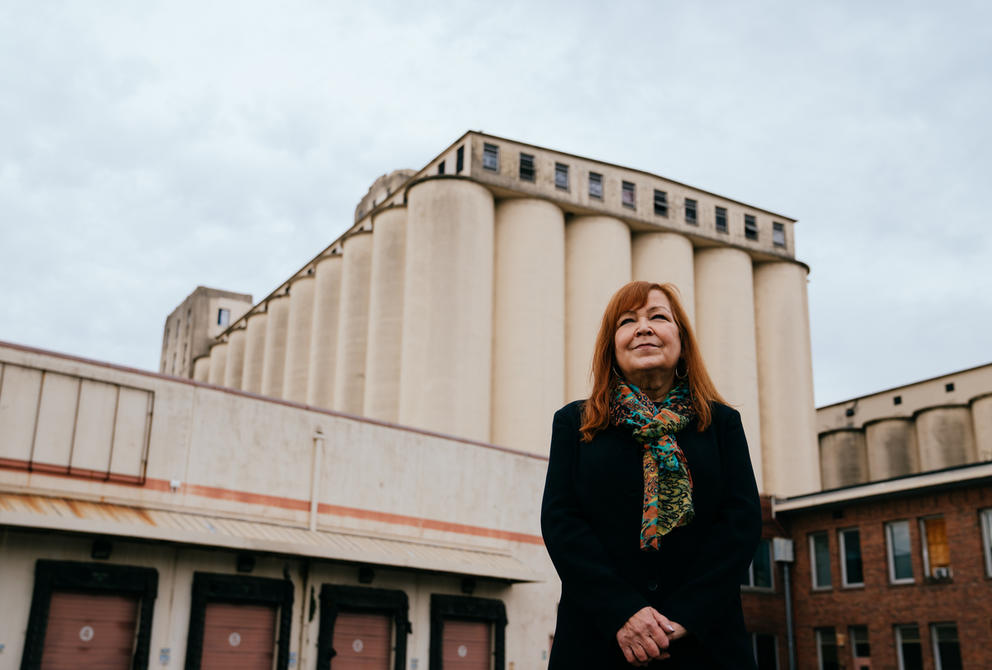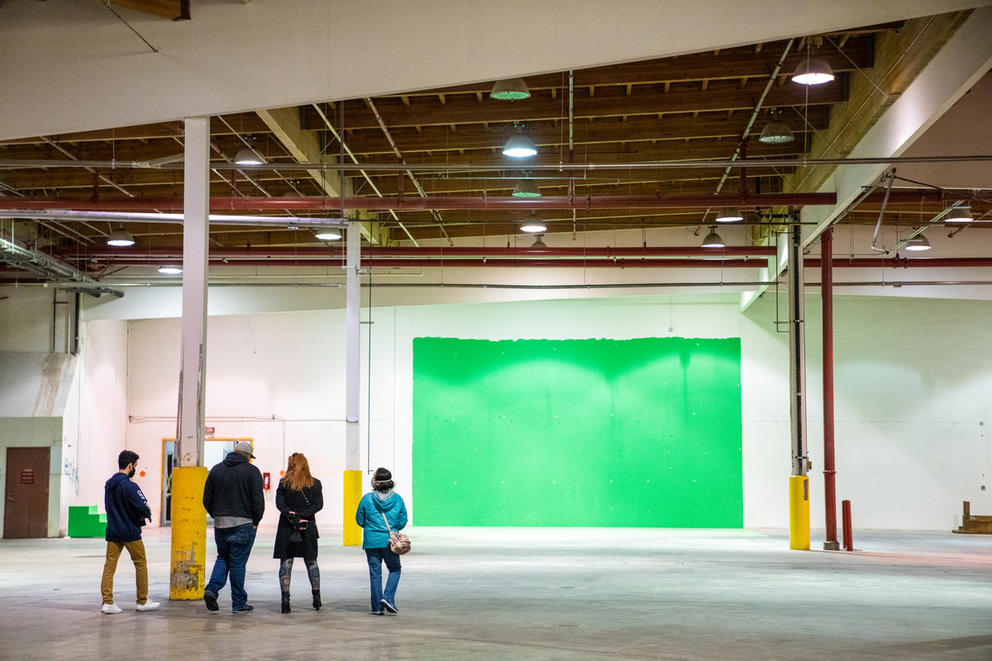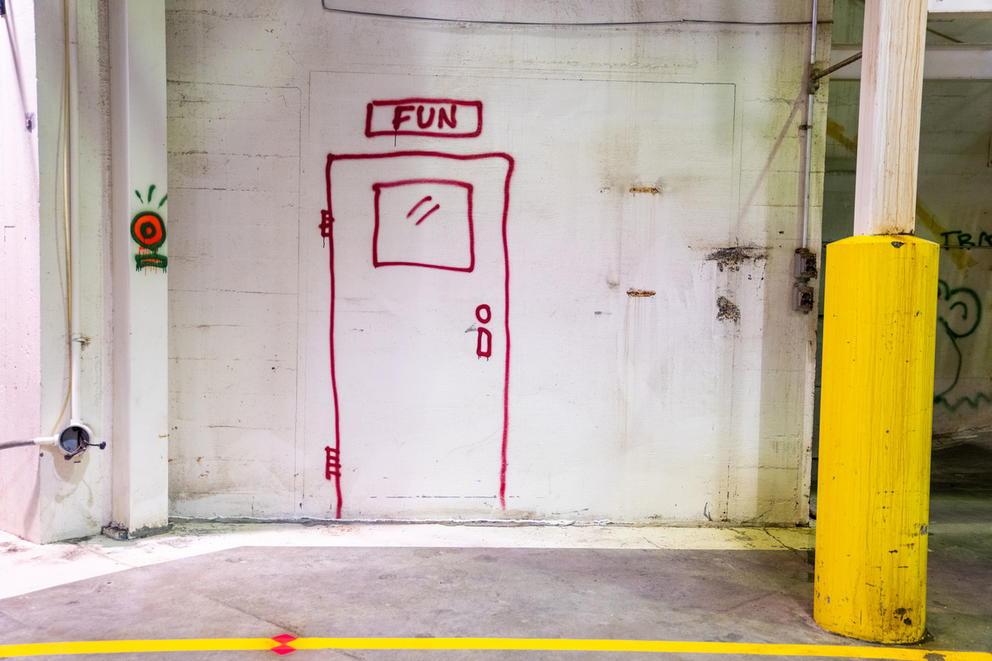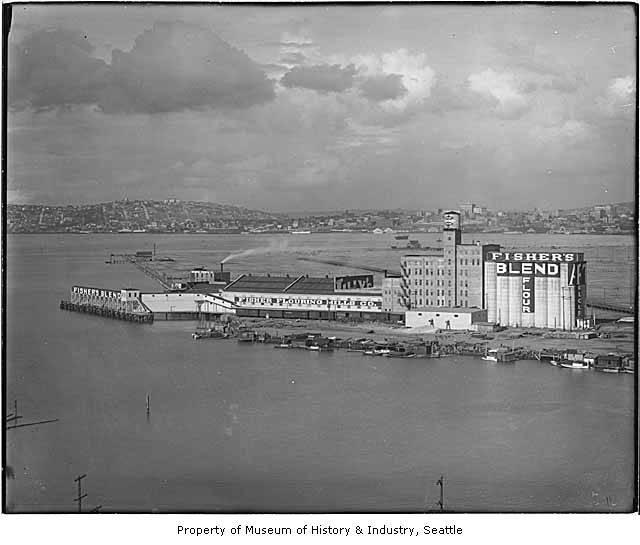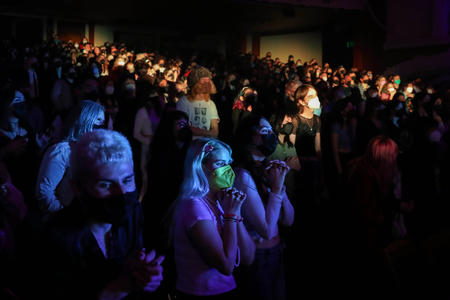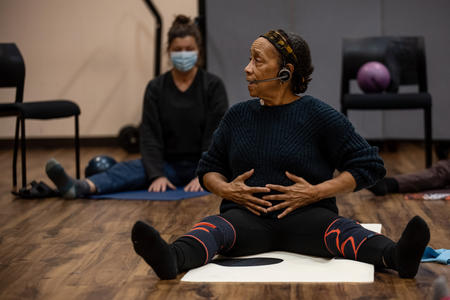On March 10, the Washington Legislature passed a bill that increases funding for Washington’s Motion Picture Competitiveness Program, from the current $3.5 million a year cap up to $15 million in funding assistance for production companies.
Some of that funding will be set aside to train the next generation of movie crews and make the sector more accessible to people from underrepresented communities. (The bill now awaits the governor’s signature.) Update: On March 31, the governor signed the bill, which is slated to take effect in June.
In addition, after a trial run last year, Harbor Island Studios — a sprawling warehouse that King County revamped into a professional film and TV studio and future soundstage — is gearing up for its grand opening this spring. Both are hailed as game changers for local film and TV production.
“It's a new chapter in Washington film history,” says Amy Lillard of Washington Filmworks, which operates the Motion Picture Competitive Program and has been advocating for an expanded incentive for more than a decade. “We are once again competitive…. We now have the tools in our toolbox, whether it be the incentive, or the workforce development, or the soundstage, to really draw work here.”
While upping the incentive cap has been many years in the making, King County’s $3 million warehouse conversion was a more recent development. But both address long-standing deficits, says Seattle filmmaker Megan Griffiths, who is currently wrapping up post-production of a Washington state-produced film and working on a TV show in upstate New York.
“We have been needing a large-scale production stage in this region for a long time,” she says. A “stage” of the caliber Griffiths is referring to allows production companies to come in, build or bring in sets and shoot all the necessary indoor scenes at once, and often also houses prop and costume shops, as well as offices.
Take television work, Griffiths says: “This has been something we have struggled to attract because of the limitations of our incentive program and the lack of stage space, so the fact that both of those issues are seeing such major improvements concurrently is huge. This could attract long-term television productions to the area, bringing union jobs and sustainable work.”
An example, says local producer Kim Schwarzkopf, is Station 19, a Grey’s Anatomy spinoff set in Seattle but shot (largely) in Los Angeles. Schwarzkopf helped shoot some of the show’s local scenery. Perhaps, with Harbor Island, a Seattle-set series like this could be filmed here in its entirety, she says. “You could shoot [both] the outdoor stuff and the indoor stuff here…. You don't have to break the production apart into multiple cities,” she says. “Makes it a lot easier.”
TV productions also tend to require a great deal of space to build and contain sets that anchor a series (like Monica and Rachel’s living room in Friends, say). At 117,000 square feet, Harbor Island Studios could be a good fit for this kind of work, Griffiths says. “It has all the qualities that I have seen in other converted stage spaces in cities like Austin and New Orleans,” she adds. “It has enormous potential.”
That was also the message that Kate Becker, creative economy and recovery director of King County’s Executive Office, was promoting during a February industry tour of Harbor Island Studios. The building, part of a former flour mill complex, sits on Seattle’s Harbor Island, an artificial island in the Duwamish River nestled between Seattle’s industrial district, West Seattle and Elliott Bay.
On a sunny winter day, a group of local producers, filmmakers, videographers and other industry insiders had gathered near the concrete loading dock of an inconspicuous building dwarfed by the giant concrete silos of the former flour mill. A mammoth container ship plodded along the Duwamish. In the distance, the West Seattle and Spokane Street bridges sliced across the view of Mount Rainier like concrete electrical wires. White shipyard cranes and multicolored Rubik’s cubes of stacked shipping containers stood out against the blue sky.
The Fisher Flour Mill’s grain silo and milling complex were among the first structures to be built here after the creation of Harbor Island in the early 1900s. A warehouse was added in the 1980s. After King County purchased the complex nearly two decades ago, the property remained largely vacant and became a graffiti-clad, steampunk “ghost town” — until 2020.
That’s when King County’s Kate Becker got word that Three Busy Debras, a Warner Bros/Adult Swim TV series produced by Amy Poehler, needed a place to shoot indoors. “How can we say no to that?” Becker said to the assembled group at Harbor Island. King County had been eyeing the location for a while, but the pandemic had put the need to employ local crews into stark relief. “So we scrambled to get this place ready to have big crews in here,” she said.
King County crews and contractors rewired and built interior soundproof walls, installed fire protection, upgraded the electrical system, created new exits, repaired docks and painted the interior of the four-hall complex. Workers also installed a carpentry shop, so Three Busy Debras producers could build their own sets — 70 in total — in the building (the shop will remain a feature of the complex). The crew needed only to wheel the sets a few feet down the hallway for filming.
Three Busy Debras’ production wrapped up last year (Season 2 of the series is set to premiere on April 24) after filming in the building with a temporary permit. Since then, King County has made improvements to the sprinklers, washer/dryer hookups, ventilation system, soundproofing and other elements. Now it’s just a question of waiting for the permanent permit to come through, Becker said.
During the tour, the colossal hallways and rooms felt empty and expectant. As Becker walked the group toward the second soundstage, her heels clicked on the finished concrete floor and her voice echoed up to the high ceilings. “We [think] it is the biggest soundstage to be in the region since Northern Exposure in 1995,” she said.
Becker likes to point this out: Northern Exposure filmed six seasons in Redmond until production ended in the mid-1990s, when it became one of the last TV shows to film in Washington. It’s Becker’s nod to the state’s now-bygone golden age of film and tv production in the 1980s and ’90s (think: Sleepless in Seattle, 10 Things I Hate About You and Singles).
The goal is to bring back these types of long-term productions. “That’s always the golden goose for film, right?” Becker said to the group. “An episodic [or] big feature, that kind of thing. Wouldn’t we allow commercials and short shoots? Of course, if they didn’t impose upon bigger productions that can keep people solidly employed.”
Becker led us into a 11,000+ square foot room, completely empty (except for a slightly elevated plywood floor) and asked us to look at the “Elephant Door”: a large, acoustical sliding door sometimes called a stage door. It slowly rolled down and enclosed us in the room at the push of a button. Brand new, it should eliminate exterior sound.
Seattle-based film producer Ashley Genevieve still had some doubts. “Are the sound — I want to say ‘complaints’ but in the nicest way — still the same, in the sense of birds?” she asked.
“Every single tour someone asked this question. Our seagulls are famous,” Becker responded. The squawking seagulls circling above the building — protected migratory birds — have made the rooftop their breeding ground. That’s an issue, particularly for long, drawn-out and emotional shots (where silence can be key); you need the “stage” to be soundproof.
“They attempted [installing] big plastic owls, and the seagulls quickly befriended [them],” Becker said. “They attempted pinwheels. That didn't work.” The latest — promising — strategy, developed with a migratory bird expert, Becker explained later, is a gel to keep the seagulls from nesting and returning here. Before the grand opening, the team also plans to add sound-absorbing material to the ceiling. That, Becker said, should make it a true, (mostly) soundproof “soundstage.”
During a phone call a few weeks after the tour, Genevieve said she thought the sound (and some other, minor details) still needed some improvement, but that it’s otherwise a great stage option with plenty of opportunity. “First off, the space is massive,” she said. “And that is amazing in the urban area, especially Seattle, where real estate is so prized…. It was so cool to see a giant space where you could drive a truck through,” Genevieve said.
Plus, the sound can be mitigated by building a room inside that room, creating a double layer. “You just need some fabric and some foam,” Genevieve said. “I've already pitched the space to a Netflix series and a [major] film,” she added.
Producers are generally a scrappy bunch. If they can make the financials pencil out, they can make it work. If the rent on the space is less than a Los Angeles soundstage, it’s OK to have to add more insulation or get your own catering, several producers said.
Partly to that end, Harbor Island’s pricing is designed to be flexible. The price is based on a sliding scale with a few factors: “Do you have folks on your sets in your production who are new to it, that you're helping to acquire the skills to work in the film industry?” Becker said. How diverse is your crew? Are sets employing green and sustainable filmmaking practices to minimize food and other waste? Are you employing a local crew?
“If you can hit all four of those values, then the price is adjusted accordingly,” Becker said. “But if you want to blow in from Hollywood or Atlanta or somewhere, and you're not hiring our local crews, and you don't have time or interest in worrying about those values, then the price will be a whole different scale.”
Still, is a decent price, maybe even a good deal, and a film incentive enough to lure Hollywood filmmakers to Seattle when they could easily go to Atlanta or Vancouver, places with stronger tax incentives and infrastructure? Those cities don’t merely have robust tax incentives — they also have an established filmmaking reputation.
“It is plenty to get people to want to come here,” said Peter Barnes, a longtime film and media production professional and a member of King County’s Film Advisory Board. “I've heard about the phone calls and inquiries,” he said. “There's momentum, it's just a question of keeping it rolling.”
Another question, posits local filmmaker Matthew J. Clark: do we have the labor force to support a steady stream of large productions? When Three Busy Debras landed in town, the production hired 130 local crew members, 51 cast members and 253 extras — great for the local economy. But during that time, it proved challenging to find available local crew members for other, smaller jobs, multiple producers told Crosscut.
Over the years, many film industry workers haven’t been able to stick around in Seattle because of the lack of opportunities and longer-term employment that TV and major movies bring. “It's kind of a chicken and the egg sort of thing,” Clark said. Now, it’s just a question of getting the first jobs to come here. “Once you have one production … then you have another one and another one,” he said.
The workforce development aspect of Harbor Island’s pricing structure, as well as a provision in the recent Motion Picture Competitiveness Program bill is supposed to tackle this problem. “We’ll finally have the legislative authority to do workforce development, business development and career connected learning,” said Washington Filmworks’ Lillard. “So between the soundstage, the increased incentive and us being able to work on the cast and crew side, [that adds up] to a complete ecosystem,” she said. “You're talking about … us being able to collectively, literally change and transform the film industry in Washington state. It's an incredible moment in time.”
Get the latest in local arts and culture
This weekly newsletter brings arts news and cultural events straight to your inbox.

